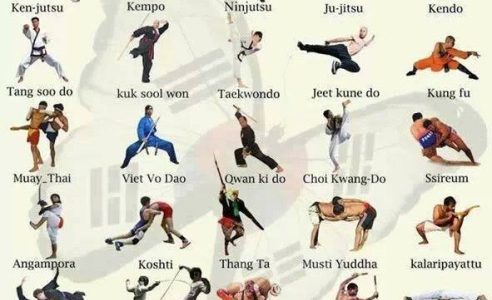A Relative Research Of Typical Martial Arts And Modern Fight Sports: Highlighting The Important Distinctions
A Relative Research Of Typical Martial Arts And Modern Fight Sports: Highlighting The Important Distinctions
Blog Article
Content Composed By-Skovbjerg Finnegan
When you think of martial arts, do you lean a lot more toward the traditional techniques or the modern-day battle sporting activities? Each path uses one-of-a-kind advantages and experiences, shaped by their approaches and training techniques. Traditional martial arts highlight individual development and self-control, while contemporary fight sporting activities focus on competition and performance. Comprehending these differences can guide you in picking the best technique for your journey. Yet how do these differences show up in training and approach?
The Ideology and History Behind Traditional Martial arts
While many individuals link martial arts with physical fight, the viewpoint and background behind standard martial arts run much deeper. You'll discover that these disciplines highlight personal development, discipline, and regard.
Stemming from ancient practices, typical martial arts were commonly established for Self-Defense and spiritual development. They personify concepts such as equilibrium, consistency, and self-discipline, directing professionals past simple combating abilities.
As you train, you'll not only discover methods yet additionally get insights right into the culture and values that formed these arts. The rituals and traditions, commonly given via generations, promote a sense of neighborhood and belonging.
The Affordable Nature of Modern Fight Sports
Modern combat sports have transformed the landscape of martial arts into a highly competitive field, where athletes challenge in an examination of ability, method, and endurance.
You'll observe that competitions are frequently organized with strict policies and regulations, making certain justice and security. These occasions draw in huge target markets, sustaining the excitement and intensity of competitions.
Athletes train carefully, not just for physical prowess but additionally for mental strength, understanding that every detail counts in the ring. The adrenaline rush throughout competitors is apparent, as competitors press their restrictions to claim triumph.
https://www.wjhg.com/2022/07/21/kick-through-summer-with-last-dragon-martial-arts/ and virtuosity entailed, making modern battle sports a thrilling spectacle that remains to develop and mesmerize lovers around the world.
Training Methods and Techniques: A Relative Evaluation
The affordable ambience of modern combat sporting activities demands ingenious training approaches that vary dramatically from traditional martial arts.
In https://martialartskarateforkids97643.activoblog.com/37682186/core-abilities-established-in-female-s-self-defense-programs , you'll focus on particular methods, competing, and conditioning, often using drills that simulate genuine battle scenarios. You'll see an emphasis on measurable efficiency and frequent competition to examine your skills.
On the other hand, typical martial arts focus on kinds, katas, and philosophical mentors, often emphasizing discipline and regard over competition.
Training is generally much less intense and might involve repetitive practice rather than real-time sparring.
While both approaches develop skill and physical fitness, modern-day combat sports give an extra dynamic and adaptable training atmosphere, preparing you for prompt obstacles in the ring or cage.
Choose the path that aligns with your goals and rate of interests.
Conclusion
In choosing between conventional martial arts and modern-day combat sporting activities, it truly boils down to what you value many. If you're trying to find individual growth, technique, and a feeling of area, conventional arts may be your ideal fit. However if best chinese martial arts flourish on competitors and real-time challenges, modern-day battle sporting activities could be the way to go. Ultimately, both courses supply distinct advantages, so it's all about aligning your training with your individual goals and rate of interests.
